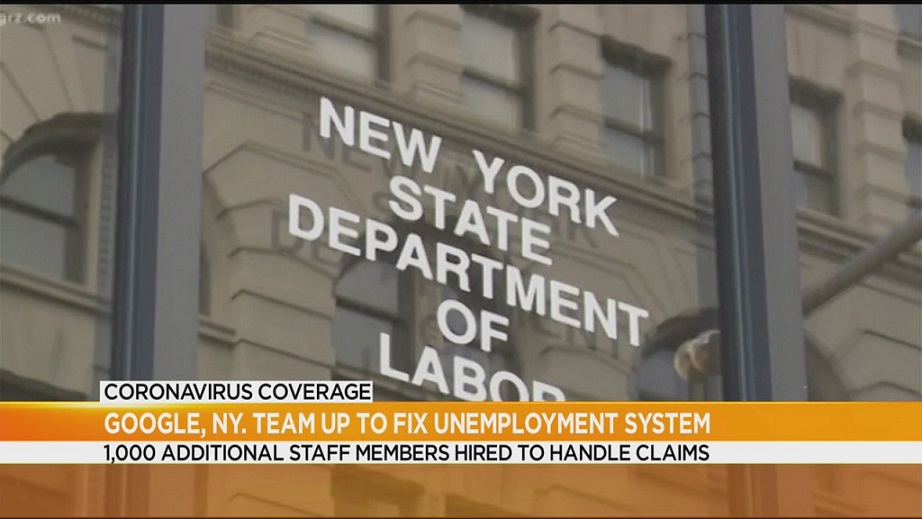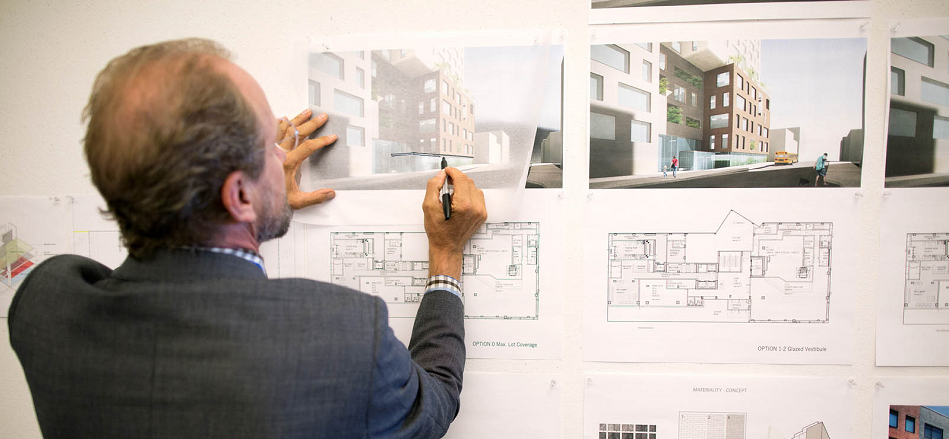Tag archives for: jobs

What started as a comment has become a short post in response to an opinion article by Adam Greenfield in the current edition of Dezeen online titled “All those complicit in Neom’s design and construction are already destroyers of worlds.”
In Sum.
• Adam Greenfield’s opinion article titled “All those complicit in Neom’s design and construction are already destroyers of worlds” argues that anyone who accepts money to work on any aspect of the Neom project is automatically complicit in everything that the project does.
• I disagree with this opinion. I believe that everyone is responsible for choosing which parts they work on and to what extent. If they are not comfortable with a particular aspect of the project, they can always decline to work on it or limit their involvement.
• Architecture is often seen as a symbol of power and authority, but it can also be seen as a reflection of the political and economic ideologies of the society in which it is built. In some cases, architecture may even help to shape these ideologies.
• The author paints architects who accept commissions with a broad brush when reality shows that many architects are conscious of ethical implications in their projects.
I disagree that if you accept money to work on any aspect of the Neom project, you need to know that you are complicit. I believe in and support many parts of the project, and I would gladly accept compensation for my work on those aspects. I do not think that taking money makes me automatically complicit in everything that the project does; it is my responsibility to choose which parts I work on and to what extent. If I am not comfortable with a particular aspect of the project, I can always decline to work on it or limit my involvement. Ultimately, it is up to each individual to decide whether or not they want to accept money to work on the Neom.
Architecture is often seen as a symbol of power and authority. This is especially true of traditional, classical architecture, which is often associated with authoritarian regimes such as the Roman Empire or the British monarchy. However, architecture is also drawn to capitalist and socialist governments. In capitalist societies, architecture is often seen as a way to make money and attract investment. In contrast, in socialist societies, it is seen as a way to improve the lives of citizens and promote equality.
Architecture can therefore be seen as a reflection of the political and economic ideologies of the society in which it is built. In some cases, architecture may even help to shape these ideologies. For example, the Bauhaus design school was founded in Germany in the 1920s to combine art and industry. This was when the country was undergoing a period of political and economic change, and the Bauhaus school helped shape the new German identity. Similarly, post-modern architecture emerged in the 1970s as a reaction to the modernist movement dominating architecture.
Noem’s cutting-edge Line project is about new tech and inventions to tackle global warming, setting a new benchmark for future urban cities. The developers and architects are a small part of the project team, which includes futurists, scientists, inventors, engineers, and artists. Their innovative approach means that the line project will not contribute to global warming but instead help fight it. This is a crucial step in the right direction. The Neom team is passionate about making a difference and ensuring that our planet has a bright future. We believe that through technology and innovation, we can make this happen.
The author paints the architects that accept commissions with a broad brush when the reality is much more nuanced. As such, it is essential to consider the ethical implications of their work. This includes whether or not they are contributing to the displacement of indigenous peoples or exacerbating climate change.
While it is easy to paint all architects and the commissions they earn with a broad brush, the reality is much more nuanced. Many architects are conscious of the ethical implications of their work and make an effort to minimize the negative impact of their projects.
It is essential to hold all architects accountable for the societal implications of their work. But it is also important to remember that not all architects are the same. Some are working to make a positive difference in the world. Knowing that sitting on the sidelines affects nothing Morphosis, Zaha Hadid Architects and other studios committed to the Neom project can sleep well tonight.
ABOUT THE AUTHOR
After working at various design practices on a full-time and freelance basis and starting his design firm, David McFadden saw a gap to fill in the industry. In 1984, he created an expansive hub for architects and hiring firms to sync up, complete projects, and mutually benefit. That hub was Consulting For Architects Inc., which enabled architects to find meaningful design work while freeing hiring firms from tedious hiring-firing cycles. This departure from the traditional, more rigid style of employer-employee relations was just what the industry needed – flexibility and adaption to current work circumstances. David has successfully advised his clients and staff through the trials and tribulations of four recessions – the early ’80s, the early ’90s, the early 2000s, the Great Recession of 2007, and the Pandemic.
Op-Ed
|
AdamGreenfield, AllthosecomplicitinNeomsdesignandconstructionarealreadydestroyersofworlds, architects, architecture, bauhaus, business, cities, Consulting For Architects, David McFadden, design, dezeen, futurists, globalwarming, jobs, Line, Morphosis, Noem, Saudi, urban, zahahadid
|

As the gig economy continues to grow, so do the number of questions about how the law will be regulated. President Biden’s proposed legislation, the Protecting the Right to Organize (PRO) Act, includes several provisions that could significantly impact gig workers, including freelance architects and interior designers.
The PRO Act would make it easier for gig workers to unionize by clarifying that they are employees, not independent contractors. It would also give them the right to bargain collectively with their employers.
The bill would also make it illegal for companies to misclassify their workers as independent contractors to avoid paying benefits or complying with labor laws, even in cases where the worker is an independent contractor and prefers to work that way.
Working as an independent contractor has many benefits for architects and interior designers. These professionals can enjoy greater control over their work, schedule, and income. Additionally, they are not tied to one company or location and can take on projects that interest them from anywhere in the world. Independent contractors often have more freedom to negotiate fees and choose their working hours. They also typically have lower overhead costs than traditional businesses, which results in higher profits. In addition, they are not subject to the same employment laws and regulations as conventional businesses, giving them more flexibility in operating.
If you believe every worker in America should be the employee of a firm rather than work for themselves, you should support the passage of the PRO Act. If not, there are a few things that architects and interior designers can do to fight the passage of this law. First, they can educate themselves and others about the potential negative impacts of the law. Second, they can contact their local representatives and let them know their concerns. Finally, they can support organizations fighting against the passage of the law. Where do our professional associations stand? Contact the national headquarters of The American Institute of Architects and work with them to develop a strategy. https://www.aia.org/pages/6347502-federal-advocacy-outreach.
ABOUT THE AUTHOR
After working at various design practices on a full-time and freelance basis and starting his design firm, David McFadden saw a gap to fill in the industry. In 1984, he created an expansive hub for architects and hiring firms to sync up, complete projects, and mutually benefit. That hub was Consulting For Architects Inc., which enabled architects to find meaningful design work while freeing hiring firms from tedious hiring-firing cycles. This departure from the traditional, more rigid style of employer-employee relations was just what the industry needed – flexibility and adaption to current work circumstances. David has successfully advised his clients and staff through the trials and tribulations of four recessions – the early ’80s, the early ’90s, the early 2000s, the Great Recession of 2007, and the Pandemic.

Flex-core staffing is an excellent way for architecture firms to break the hiring-firing cycle, increase their firm’s bottom line, and keep their employees happy. By hiring temp architects to fill in the peaks and valleys that always occur, firms can keep their core staff intact and avoid the need to engage and fire employees constantly. This practice can save firms both time and money, and it can also help them maintain a higher level of quality control.
Few things are more costly to a business than the hiring and firing cycle. Not only does it take a toll on your human resources department, but it can also significantly impact your bottom line.
Fortunately, there are ways to break the cycle and improve your financial situation. You can improve your bottom line and increase profits by taking some simple steps.
1. Review your hiring practices. Poor hiring practices are the most common causes of the hiring and firing cycle. If you’re constantly hiring and then firing employees, it’s time to take a closer look at your process. Are you screening applicants properly? Are you asking the right questions?
2. Train your managers. Another common cause of the hiring and firing cycle is poor management. If your managers constantly have to deal with employee issues, it’s time to give them some training. Teach them how to manage their teams and handle conflict appropriately.
3. Communicate with your employees. One of the best ways to avoid the hiring and firing cycle is to communicate with your employees. Let them know what your expectations are, and give them regular feedback. This will help them understand what they need to do to meet your standards.
4. Be consistent with your policies. You must comply with your policies to avoid the hiring and firing cycle. Make sure that everyone in your company knows your procedures and that they are followed. This will help to create a sense of stability and reduce the need for turnover.
5. Offer incentives. Another great way to avoid the hiring and firing cycle is to offer incentives for good performance. If you have employees who consistently meet or exceed your expectations, offer them a bonus or other incentive. This will show them you’re serious about their work and appreciate their efforts.
These simple steps can break the hiring and firing cycle and improve your bottom line. Implement these tips in your business today and see the difference it makes.
There are many ways to increase an architecture firm’s bottom line. One way is to increase the number of projects that the firm takes on. Another way is to increase the fees that the firm charges. Still, another method is to cut costs.
One way to increase an architecture firm’s bottom line is to increase the number of projects that the firm takes on. This can be done by marketing the firm more aggressively or by expanding the geographic areas that the firm serves.
Another way to increase an architecture firm’s bottom line is to increase the fees that the firm charges. This can be done by expanding the firm’s service rates or adding new services that command higher fees.
Still another way to increase an architecture firm’s bottom line is to cut costs. This can be done by streamlining the firm’s operations, eliminating unnecessary expenses, or finding ways to save on materials and labor.
Increasing an architecture firm’s bottom line can have many benefits. It can improve the firm’s financial health, allow the firm to hire more staff, and enable the firm to expand its services. Taking steps to increase an architecture firm’s bottom line can help the firm become more prosperous.
ABOUT THE AUTHOR
After working at various design practices on a full-time and freelance basis and starting his design firm, David McFadden saw a gap to fill in the industry. In 1984, he created an expansive hub for architects and hiring firms to sync up, complete projects, and mutually benefit. That hub was Consulting For Architects Inc., which enabled architects to find meaningful design work while freeing hiring firms from tedious hiring-firing cycles. This departure from the traditional, more rigid style of employer-employee relations was just what the industry needed – flexibility and adaption to current work circumstances. David has successfully advised his clients and staff through the trials and tribulations of four recessions – the early ’80s, the early ’90s, the early 2000s, the Great Recession of 2007, and the Pandemic.
Hiring trends
|
architects, architecture, business, Consulting For Architects, design, employees, firing, firms, flex, Hiring, human, Interviewing, jobs, Labor Market, manage, porfolio, resources, resume, screening, staffing
|

There are always peaks and valleys in the work of an architectural firm. Sometimes we work on multiple projects at different phases. Other times we are focused on a single project. Design Development and Construction Documents phases can be exceptionally hectic, with deadlines looming.
There are many reasons to pursue a career as an architect on a project basis. Perhaps you are looking for a way to accelerate your career growth, or you want to avoid pigeonholing into one particular type of architecture. Either way, working on back-to-back projects at different firms can give you the necessary experience to be more marketable than your peer group.
Most architects begin their careers working at one firm for several years. However, there are many benefits to pursuing a career as an architect on a temporary or project basis. Here are just a few:
1. You will gain experience working on a variety of different types of projects.
2. You will have the opportunity to work at different firms, each with a unique culture and approach to architecture.
3. You will be able to build a network of contacts across the industry.
4. You will develop a more marketable portfolio because of your diverse experience.
Job Seekers
CFA is a full-service placement and recruiting firm. Our recruiters will help you find the perfect new job and career. We work with top companies in various industries and can connect you with opportunities that best match your skillset and goals. Whether you’re looking for a new challenge, higher compensation, better use of your skillset, growth potential, or a better work/life balance, CFA can help you find the right fit for your design sensibilities.
If you’re passively searching or already in the job market, submit your resume today, and one of our experienced recruiters will reach out to discuss available opportunities.
CFA also offers various other services to job seekers, including resume writing, interview coaching, and salary negotiation assistance. We can help you at every step of your job search, from finding the right opportunity to nailing the interview and negotiating the best possible salary.
CFA quickly became the industry leader in flexible hiring, full-time freelancing, and project consulting. Our years of experience and commitment to quality have made us the go-to source for architecture and interior design talent. We offer a wide range of services to meet the needs of our clients, and our team of experts is always available to help you find the right solution for your project.
Since its founding, CFA has helped thousands of architects and interior designers find their ideal job placements. We take pride in our reputation as one of the industry’s most respected and trusted names.
If you’re looking for a trusted partner to help you with your next project, look no further than CFA. We have the knowledge and experience to get the job done right, and we’re always here to help you find the perfect solution for your needs. Contact us today to learn more about our services and how we can help you succeed at 212-532-4360 or email your resume and portfolio to recruiters @ cons4arch. com
ABOUT THE AUTHOR
After working at various design practices on a full-time and freelance basis and starting his design firm, David McFadden saw a gap to fill in the industry. In 1984, he created an expansive hub for architects and hiring firms to sync up, complete projects, and mutually benefit. That hub was Consulting For Architects Inc., which enabled architects to find meaningful design work while freeing hiring firms from tedious hiring-firing cycles. This departure from the traditional, more rigid style of employer-employee relations was just what the industry needed – flexibility and adaption to current work circumstances. David has successfully advised his clients and staff through the trials and tribulations of four recessions – the early ’80s, the early ’90s, the early 2000s, the Great Recession of 2007, and the Pandemic.
Project Based Work
|
architects, architecture, Careers, Consulting For Architects, flexible, freelancing, Interviewing, jobs, opportunities, pandemic, Project based, recruiters, resume, salary, workforce, worklifebalance, writing
|

October 6, 2022 – The post-pandemic job hunt is in full swing, and for architects and interior designers, the demand is higher than the supply. With businesses reopening and new companies starting, there is a greater need for these professionals’ design services. If you are an architect or interior designer looking for a job, now is the time to start your search!
There are a few things that you can do to increase your chances of landing the job that you want. First, ensure that your resume and portfolio are up-to-date and highlight your experience in the industry. Next, reach out to your contacts and let them know you are looking for work. Don’t be afraid to apply for jobs outside your usual area of expertise; sometimes, the best opportunities come from unexpected places. Seek out a salary and compensation package that takes inflation into account. And finally, enlist a qualified placement firm on your behalf to uncover “hidden” openings.
With a little effort, you should be able to find the perfect job in this post-pandemic world. Good luck!
Do you have any tips for job hunting in the current market? Could you share them with us in the comments?
ABOUT THE AUTHOR
After working at various design practices on a full-time and freelance basis and starting his design firm, David McFadden saw a gap to fill in the industry. In 1984, he created an expansive hub for architects and hiring firms to sync up, complete projects, and mutually benefit. That hub was Consulting For Architects Inc., which enabled architects to find meaningful design work while freeing hiring firms from tedious hiring-firing cycles. This departure from the traditional, more rigid style of employer-employee relations was just what the industry needed – flexibility and adaption to current work circumstances. David has successfully advised his clients and staff through the trials and tribulations of four recessions – the early ’80s, the early ’90s, the early 2000s, the Great Recession of 2007, and the Pandemic.
The Job Hunt
|
architects, architecture, Consulting For Architects, David McFadden, demand, design, interiordesigners, jobhunt, jobs, pandemic, post, resume, supply, talent, Talent Shortage, unemployed architects
|

October 6, 2022 – There is no doubt that the architecture and design industry is booming. With new buildings and other projects popping up all over the country, the demand for talent is higher than ever. However, with a large percentage of the workforce leaving the industry during the pandemic, there is a significant gap in the supply of qualified workers.
The shortage has created a fierce hiring war, as companies are fighting to find and retain the best talent. With so many job openings and high demand, architects and designers can be picky about where they work. So, how can you make your firm stand out from the rest?
Here are a few tips:
– Offer competitive salaries and benefits.
– Provide opportunities for career growth.
– Offer a flexible work environment.
– supplement full-time with short-term staff to reduce work hours
– Thoughtfully designed workspace & brand
– Have a strong company culture
By offering competitive salaries, benefits, and opportunities for career growth, you will be able to attract the best talent to your firm. Additionally, having a solid company culture will help you retain that talent. So, make sure you are prepared to fight for the right talent!
ABOUT THE AUTHOR
After working at various design practices on a full-time and freelance basis and starting his design firm, David McFadden saw a gap to fill in the industry. In 1984, he created an expansive hub for architects and hiring firms to sync up, complete projects, and mutually benefit. That hub was Consulting For Architects Inc., which enabled architects to find meaningful design work while freeing hiring firms from tedious hiring-firing cycles. This departure from the traditional, more rigid style of employer-employee relations was just what the industry needed – flexibility and adaption to current work circumstances. David has successfully advised his clients and staff through the trials and tribulations of four recessions – the early ’80s, the early ’90s, the early 2000s, the Great Recession of 2007, and the Pandemic.

December 7, 2021 – Freelancers and Independent Contractors Beware: Build Back Better Vows to Impose the PRO Act Which Threatens Your Livelihood
The freedom to work as a freelancer or independent contractor provides flexibility for households and vibrancy to the American economy. It is tailor-made for architecture and design practices and freelance architects seeking to fill the peaks and valleys standard in architecture practices.
The PRO Act bans Right to Work laws nationwide. Still, it also imposes the same independent contractor/freelancer-destroying policies of California’s AB5 law, which has destroyed countless lives and driven people out of the Golden State.
Freelancers and independent contractors want to be their bosses. AB5 and the PRO Act dictate they must have a boss. Households need greater flexibility than ever after the changes brought about by COVID in the workplace.
I have been fighting my whole professional career for the right to freelance and become an independent contractor. We need to rally the political wing of AIA.org and ask their Advocacy group to engage and lobby against this provision of the Build Back Better bill.
Act Now Contact Sarah Dodge, AIA, Senior Vice-President of Advocacy & Relationships, and ask her to put the full force of the AIA’s advocacy group behind removing the AB5 provision out of Build Back Better!
[email protected]
Partial hat tip to the Freelancers Union
Freelance Community
|
AB5 Law, AIA.org, American Institute of Architects, architects, architecture, architecture practices, Build Back Better, Consulting For Architects, COVID, David McFadden, design, economy, Freelancers, freelancing, Independent Contractors, jobs, Livelihood, Pro Act, Workplace
|

Self-employed workers and independent contractors now qualify for the Pandemic Unemployment Assistance program.
On Monday, Cuomo announced the state would be partnering
with Google to create a new website that would help streamline the application
process for those still seeking to file a claim.
The website was expected to launch last night, but instead,
it launched Friday morning at 7:30.
It can be accessed by going to unemployment.labor.ny.gov.
To sign in, you will need to enter your ny.gov ID information or create a new account.
From there, users will be asked to fill out an application and
submit any required documents through a secure online portal.
If you have problems with your current account or issues
with creating one, you can call 800-833-3000 for assistance.
Anyone who partially completes their application will be
contacted by a service representative within 72 hours.
How does the callback
system work?
After applying, a state representative will reach out within
72 hours to complete your claim.
Those who have filed a claim and were told to call the
unemployment hotline to complete their application should stop calling and wait
to be contacted, according to the Department of Labor.
“Anyone who was already in the process of filing an application, whether by phone or online and was told to call back to complete their claim will not have to call back,” Deanna Cohen, a spokeswoman for the department, said in an email Friday.
A total of 810,000 have filed an unemployment claim as of
Thursday, Melissa DeRosa, Cuomo’s top aide, said.
Around 600,000 of those claims have been fully completed and
another 200,000 are in partial status.
The state is in the process of completing those claims.
A total of 6,000 people have been contacted under the new
call system as of Friday morning, DeRosa said.
I’ve applied using
the old site. Should I do so again?
No.
Claims filed using the old website are still being processed
and anyone who was told to call the state’s unemployment hotline to complete
their application should stop calling.
A representative from the Department of labor will instead
contact you within 72 hours.
What’s the best way
to apply?
The state is urging all those looking to apply for benefits
do so online and wait to be contacted by a representative.
But calls are still be accepted through the state’s unemployment
hotline at 888-209-8124.
To better process claims by phone, the state has started fielding calls seven days a week and has implemented a filing system by the last name.
Hours for the call center are Monday thru Friday: 8 a.m. to 7:30 p.m., and Saturday and Sunday from 7:30 a.m. to 8 p.m.
The filing system by the last name goes as:
A-F: Monday.
G-N: Tuesday.
M-Z: Wednesday.
What do I qualify
for?
A number of unemployment benefits have been extended to
those who normally would not qualify as a result of the federal Coronavirus
Aid, Relief, and Economic Security Act, or CARES Act, a $2.2 trillion stimulus
package approved by Congress last month.
New York provides up to $504 a week for unemployment, based
on a person’s salary.
Self-employed workers and independent contracts now qualify
for the Pandemic Unemployment Assistance program.
But individuals cannot apply for PUA until it is determined
they do not qualify for regular unemployment benefits.
That requires an extra step.
First, a person must file a regular unemployment claim through the state’s Department of Labor.
Once it’s determined they do not qualify, they can then
apply for PUA through the state.
To apply, visit unemployment.labor.ny.gov.
What else do I get
under the CARES Act?
Those who qualify for unemployment benefits will also
receive an additional $600 a week from the federal government through July 31.
In addition, the federal government is in the process of
sending out a one-time stimulus check to nearly all Americans.
Most individuals
COVID-19 Update
|
architects, architecture, cares act, covid19, department of labor, Google, governor cuomo, Independent Contractors, Interior Designers, jobs, new york city, Self Employed, unemployed architects, unemployment, unemployment assitance, unemployment benefits, unemployment insurance
|

In our third installment of Archinect’s Guide to Job Titles series, we attempt to tackle the nuanced role of the Studio Director without falling back on search engines like Google and Bing or job boards like Glassdoor, Indeed, Monster, or Ladders [not in original article]. As with most positions within architecture firms, the lines are quite blurry when it comes to the role of Studio Director. For some, this leadership position acts as a kind of operations specialist and strategist while also functioning as a firmwide design leader. For others, the Studio Director might function as a buffer between design teams and the higher-level leadership of an organization. And for others still, this individual might run their studio as a kind of “mini-firm” within a larger firm, responsible for their own business development, hiring, project management, and overall growth. The intricacies and variations associated with such a dynamic posting can’t be explained exhaustively, there will always be some deviation. Nevertheless, what follows is our attempt to capture the inherent essence of this career path in architecture.
Structural Relevance
Architecture firms come in many forms. Depending on size, the internal structure of the personnel will differ. Some firms might operate in a departmental structure, where each team works on a specific phase of a project: a design “department” might work on the programming and schematic phases before passing the work on to a technical department that would realize the construction documentation. Others might have various project teams, each with its own project managers who are overseen by a Studio Director or Principal(s). And others still might divide into multiple studios, each with a specific function, and led by their own Studio Director, respectively. In this structure, each Studio Director would report to a Managing Principal, Design Principal, or both. Some Studio Directors may even be partners of the firm or Principals themselves. When it comes to the possible organizational structures of design firms, the variations are many.
While the interpretation of the role will differ from office to office, a Studio Director will typically oversee a studio. This may be a single studio under one roof, with a small or medium-sized staff, separated into smaller teams, each with a project architect/project manager, a job captain, and designers. Each team leader could report to a Studio Director who then might report to or collaborate with a higher-level leadership team, such as a firm’s Principal(s).
A studio could also be one of many within a larger firm, each with an expertise focus such as hospitality, healthcare, sports, workplace, restoration, or interiors. Each Studio Director would have specialized knowledge and experience in their area of expertise. In this model, studios might operate under the umbrella of a larger firm but would function as its own “sub-firm,” having its own clients, staff, and sometimes even its own receptionist. These “studio structures” can vary widely, and the nuances will depend on the organization in question.
A Studio Director Needs to be a People Person
In Archinect’s Growing Leadership and Practice: Laney LA’s Search for a Studio Director, we dove deep into conversation with Anthony Laney of Laney LA about his search for a Studio Director. “On day one, five project managers, each with their own team of one to two aspiring architects, will report to the Studio Director,” Laney told Archinect. “So, in total, the Studio Director will be leading a team of about 14 people. Right now, I’m giving about 30 percent of my time to a Studio Director role. We want to tear the lid off of that and allow someone to give it 100 percent of their time.” Here we have the leader of a relatively medium-sized firm in need of a Studio Director to act as a point person between him and his project managers. Laney saw this as someone who was not only in love with design, but who also had a deep passion for creating and building a great team.
People skills are 80 percent of the job, probably more…
Archinect also spoke with Lindsay Green, Principal and Studio Director at OFFICEUNTITLED, and Shawn Gehle, Principal and Co-Founder. On the topic of managing a team and dealing with different kinds of people, the pair elaborated further. “People skills are 80 percent of the job, probably more,” they said. “You have to deal with multiple personalities every day. Happy people; sad people; staff; clients; personal issues amongst the team.” They went on to articulate the expansive role a Studio Director might have within an office. In addition to effectively managing people, a leader in this role might also take on responsibilities of reviewing the office’s backlog and ensuring future staffing needs are fulfilled, overall professional development and client management, internal development of team members, human resources, and finance. “We really rely on Lindsay to run this office, we look to her to understand our overall health and outlook,” Gehle said of Green. “She acts as a kind of Chief Operations Officer, shepherding the resources within the office.”
A Strong Business Acumen
Green’s role goes far beyond that of the traditional project manager or project architect, but rises further into rigorous strategic planning and execution, calling for business acumen and facility not typical in architects. “I think if someone is considering this role as something to work towards in their career, they should consider getting an MBA. Understanding business is crucial in this position,” Green elaborated. “And even after that, it’ll take on-the-job experience to establish an understanding of how firms operate.”
Where before one’s core preoccupation might have been client satisfaction, design quality, timely deliverables, and internal team health, the focus now expands to a broader higher level concentration dealing with the business, strategic, and developmental aspects of the organization as a whole. Yes, project teams are concerned with these aspects, but on a fundamentally different level. They have a responsibility for their projects, whereas a Studio Director’s daily duties directly deal with the trajectory and direction of the bigger picture, moving beyond a partial focus to a comprehensive one.
What are firms looking for?
So what are firms looking for in a Studio Director? Take Gensler, a corporation based around a “collaborative studio leadership model.” Each studio has a specialty and is led by a highly experienced Studio Director, who oversees everything from overall management of the team and projects to the finances and budget. They work closely with staff in both professional development and mentorship as well as hiring in collaboration with HR. Studio Directors at Gensler are responsible for marketing, developing new business, and responding to RFPs, along with several other high-level responsibilities. According to Gensler, those pursuing this role should have a minimum of 15 years of experience and have a proven record in their area of focus. Moreover, Studio Directors at Gensler should possess a comprehensive personal portfolio of work, illustrating their aptitude and understanding of their expertise. Essentially, Studio Directors are leaders of their own small firm within the larger organization that is Gensler.
A Multi-Disciplined Leader
In the end, Studio Directors are multi-disciplined leaders with a depth of experience that allows them to lead a team of professionals of varying experience levels. They operate on multiple fronts, some of which include business functions such as staff development, hiring, strategic planning, finances, as well as traditional functions like QAQC, guiding design quality, and managing clients and projects. The possibilities appear broad and wide-ranging, but we’ve learned that business acumen is crucial, people skills are essential, and a deep understanding of the traditional functions of the architect, indispensable.
Author – Sean Joyner is an architect-trained writer and editor at Archinect. His articles and essays utilize themes in history, philosophy, and psychology to explore lessons for students and professionals within the fields of architecture and design. Sean’s work prior to Archinect focused primarily on k-12 and higher education projects in Southern California. Some of the things Sean enjoys are playing and practicing chess, studying obscure topics like quantum physics and cryptography, working out, and reading compelling books.
Sean Joyner’s Blog on Archinect
Archinect
Consulting For Architects, Inc. Staffing and Recruiting Hiring Trends Blog
Articles:
Salary and responsibilities for design directors for interior design
Harvard GSD announces winners of 2020 Richard Rogers Fellowship
Job Titles
|
Archinect, architecture, architecture jobs, Careers, Consulting For Architects, design, Gensler, Hiring, hiring an architect, hiring firms, ilookup, jobs, mentoring, studio, studio director, teaching, titles
|

Successful architecture careers don’t happen by accident. Just like well-designed buildings, they’re the result of careful planning.
While there are countless metrics you can consider when going about this planning, one of the most important is the city within which you’ll work.
That’s why we’ve put together a list of the three best cities in the country for professionals who are serious about pursuing successful architecture careers.
We based this list on the all-important factor of salary but also on other unique traits worth considering.
1. Atlanta, Georgia
Georgia is one of the best states for architects, so it should come as no surprise that many point to its capital as the best city for this profession.
Even though Atlanta is home to countless high-paying careers, architects are among the top 50 best-paid. Architectural managers even crack the top 20, alongside lawyers, several doctors, and even physicists.
Of course, Atlanta also has an impressive history of hosting incredible buildings from a number of different styles, so you won’t be lacking for inspiration. That said, you won’t be lacking for competition, either. Atlanta is home to a few award-winning architects, though that also means plenty of impressive firms looking for new talent.
2. West Palm Beach, Florida
Located about an hour-and-a-half north of Miami, West Palm Beach has plenty going for it aside from the incredible weather. On average, the highest-paid architects in the country call West Palm Beach home. That average salary is an impressive $120,380 a year. Florida does not have a State income tax either.
The city is also full of architecture firms – well over three dozen of them – so you shouldn’t have too much trouble beginning your job search.
Many world-class architects choose West Palm Beach for their headquarters because there is no lack of developers with large budgets who appreciate beautiful designs.
The city also attracts talent from across the world for the same reason. As just one example, look no further than the $100-million expansion of the Norton Museum, which was designed by Norman Foster, a winner of the Pritzker Architecture Prize.
3. Chicago, Illinois
For our third spot on the list, we head north to the Windy City. Chicago’s history as a city of architectural wonders probably began in 1893 during the World’s Fair. It debuted the first ever Ferris Wheel but also brought in some of the time’s most prominent architects to contribute their talents.
Though only one major structure survived, Chicago’s tradition of welcoming incredible architects has carried on. Over the years, famous architects like William Le Baron Jenney and Frank Lloyd Wright have all left their mark on Chicago.
Modern architects looking to do the same won’t be disappointed. While the pay isn’t as much here, the cost of living is also much lower, meaning your salary will stretch a lot further.
Work with Experts Who Specialize in Launching Architecture Careers
Want more help getting your career off the ground?
At Consulting For Architects, we specialize in both project placement and permanent placement for professionals who are dedicated to pursuing successful architecture careers. If you’d like the help of an experienced team of experts, please feel free to contact us today.

















